 |
 |
 |
| |
Carotid Atherosclerosis Is Related to HIV Duration and Anti-inflammatory Profile and Not to ARV Exposure: The CHIC Controlled Study
|
| |
| |
Reported by Jules Levin
CROI 2011 Feb 27-March 2 Boston
Moise Desvarieux*1,2,3, J-L Meynard4, F Boccara5, J Capeau6, A Samri7, Z Mallat8, B Charbit9, N Haddour5, A Boyd3,10, P-M Girard4, and Collaboration in HIV, Inflammation and Cardiovascular Disease
1INSERM U738, Paris, France; 2Columbia Univ, Mailman Sch of Publ Hlth, New York, NY, US; 3Ecole des Hautes Etudes en Sante Publique, Paris, France; 4INSERM U707, Hosp St Antoine, Paris, France; 5Hosp St Antoine, Univ Pierre and Marie Curie, Paris, France; 6Hosp Tenon, Univ Paris 6, France; 7INSERM UMRS945, Univ Pierre and Marie Curie, Paris, France; 8INSERM U970, Paris, France; 9Hosp Pitie-Salpetriere, Paris, France; and 10INSERM UMRS707, Paris, France
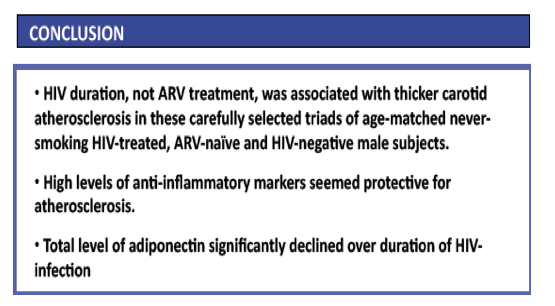
ABSTRACT
Background: Among HIV+ subjects, it is not known whether the reported increase in cardiovascular risk is due to ARV treatment or HIV-infection; and what inflammatory profiles are associated with higher risk. Previous studies have lacked either naive subjects or HIV- controls, or could not eliminate the confounding role of smoking.
Methods: We recruited in age-matched never-smoking male triads, 100 HIV+ patients (50 ARV-treated >4 years with HIV RNA <400 copies/mL, 50 ARV-naïve, but HIV+ >2 years) and 50 HIV- controls. Carotid intima-media maximal thickness (cIMT) was measured and averaged across 12 sites. Pro- (hsCRP, resistin, IL-6, IL-18, insulin, serum amyloid-A, D-dimer) and anti-inflammatory (total and high molecular weight adiponectin, IL-27, IL-10) markers were dichotomized into high/low scores (based on median values), thus creating 4 possible combinations of pro/anti-inflammation profiles. cIMT was compared across HIV treatment groups, stratified by HIV-infection duration, or inflammation profiles using linear regression models adjusted for age, diabetes, prior hypertension.
Results: Subjects had a mean age of 41.2±6.7 years (42.0±6.2) for HIV+ on ARV; 40.4±7.3 for naive HIV+; and 41.2±6.5 for HIV-. In HIV+ patients, median CD4+ cell count was 499 cells/mm3 (IQR 292) and median duration of HIV infection was 7.9 years (IQR 7.6). After excluding 1 elite controller (<50 copies/mL, ARV-naïve) subject, and adjusting for nadir CD4+ count, average cIMT was thicker with longer (>7.9 years) HIV infection, irrespective of ARV (ARV-treated 760 μm±10, ARV-naïve 757±17 μm) when compared to shorter (<7.9 years) HIV-duration (ARV-treated 731±16 μm, ARV-naïve 731±10 μm) (p <0.05 for ARV-treated subjects with >7.9 years of HIV-infection compared to ARV-naïve subjects with <7.9 years of HIV infection). Having a low anti-inflammatory profile was associated with thicker cIMT, irrespective of high- or low-pro-inflammatory markers (760±9 μm and 768±13 μm, respectively) when compared to subjects with high anti-inflammatory profiles (712±11 μm and 737±12 μm, respectively) (p <0.05).
Conclusions: HIV duration, not ARV treatment, was associated with thicker carotid atherosclerosis in these carefully selected triads of age-matched never-smoking HIV-treated, ARV-naïve, and HIV- male subjects. High levels of anti-inflammatory markers seemed protective for atherosclerosis.
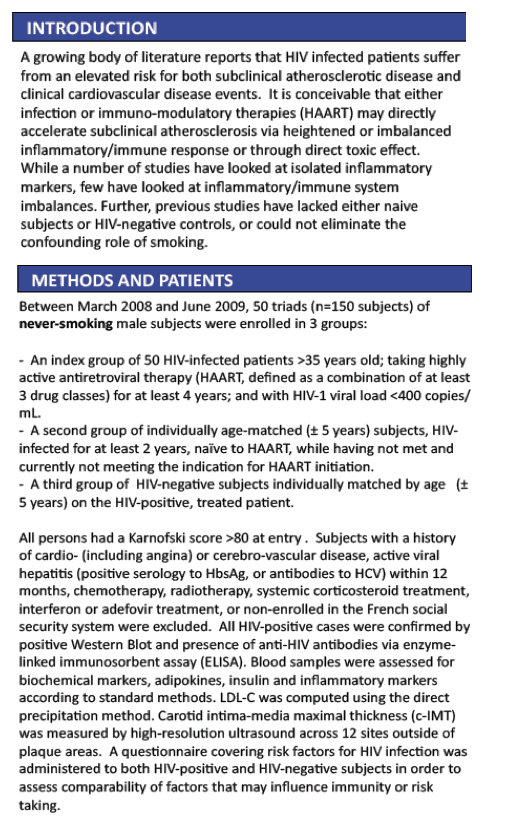
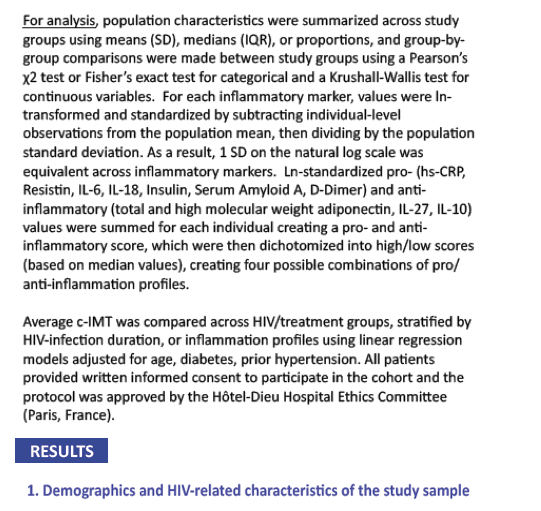
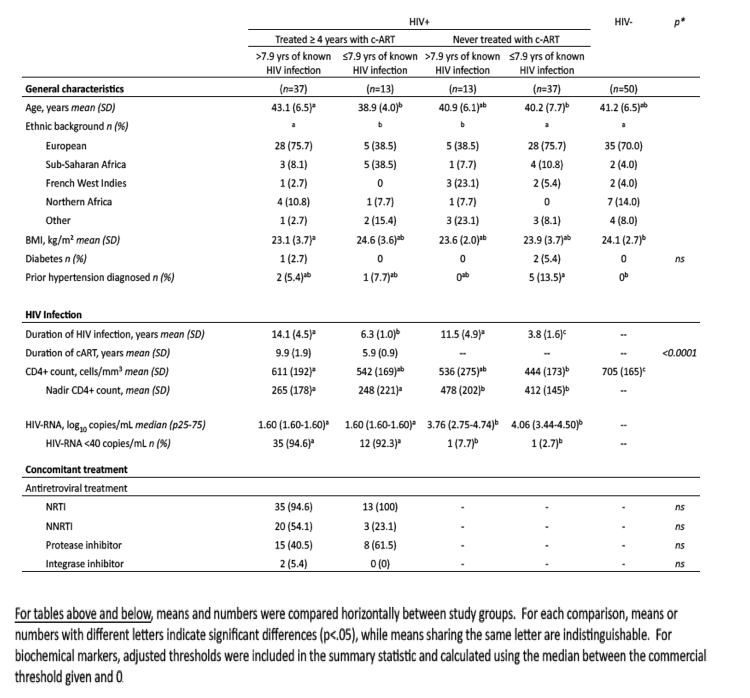
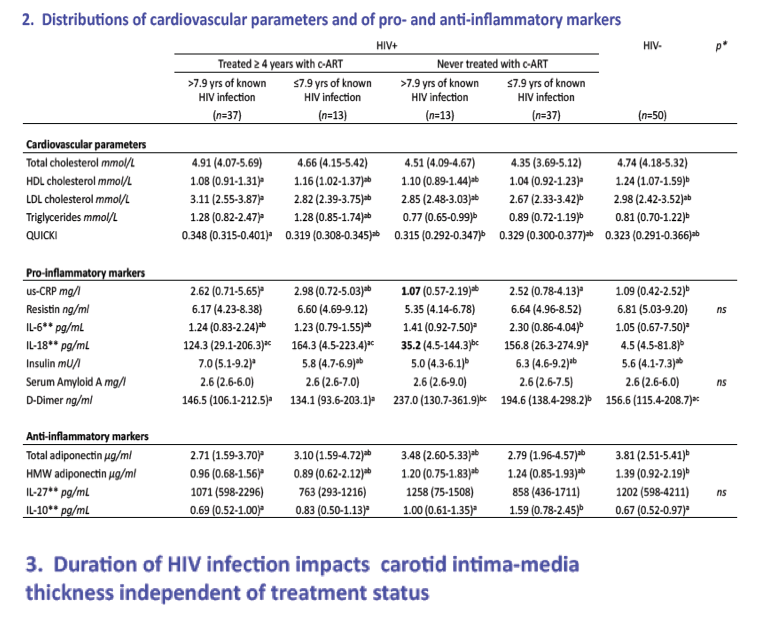
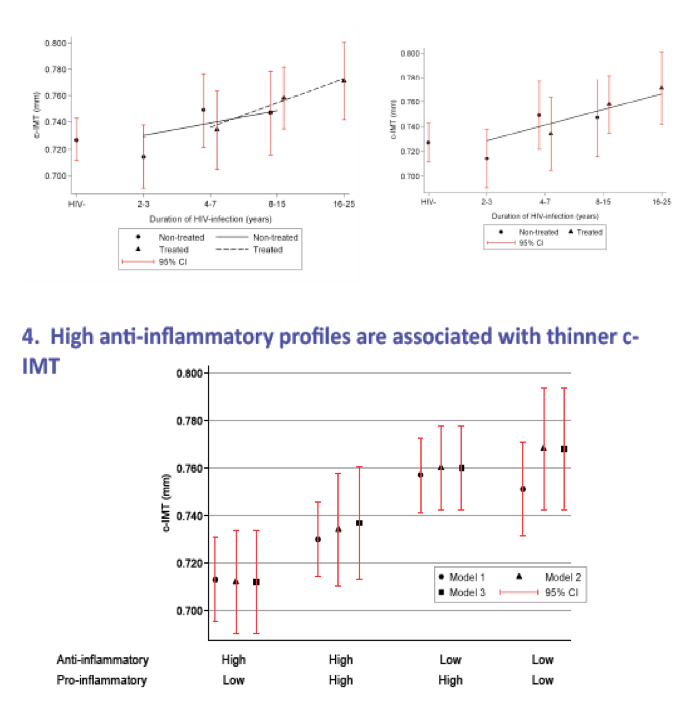
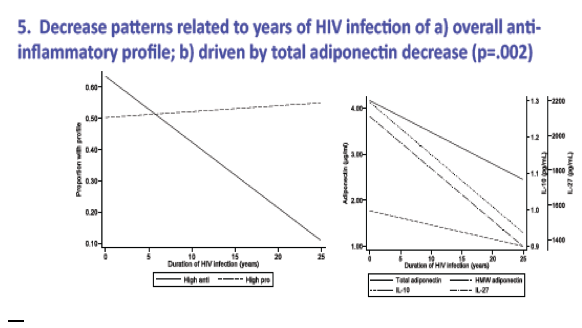
|
| |
|
 |
 |
|
|